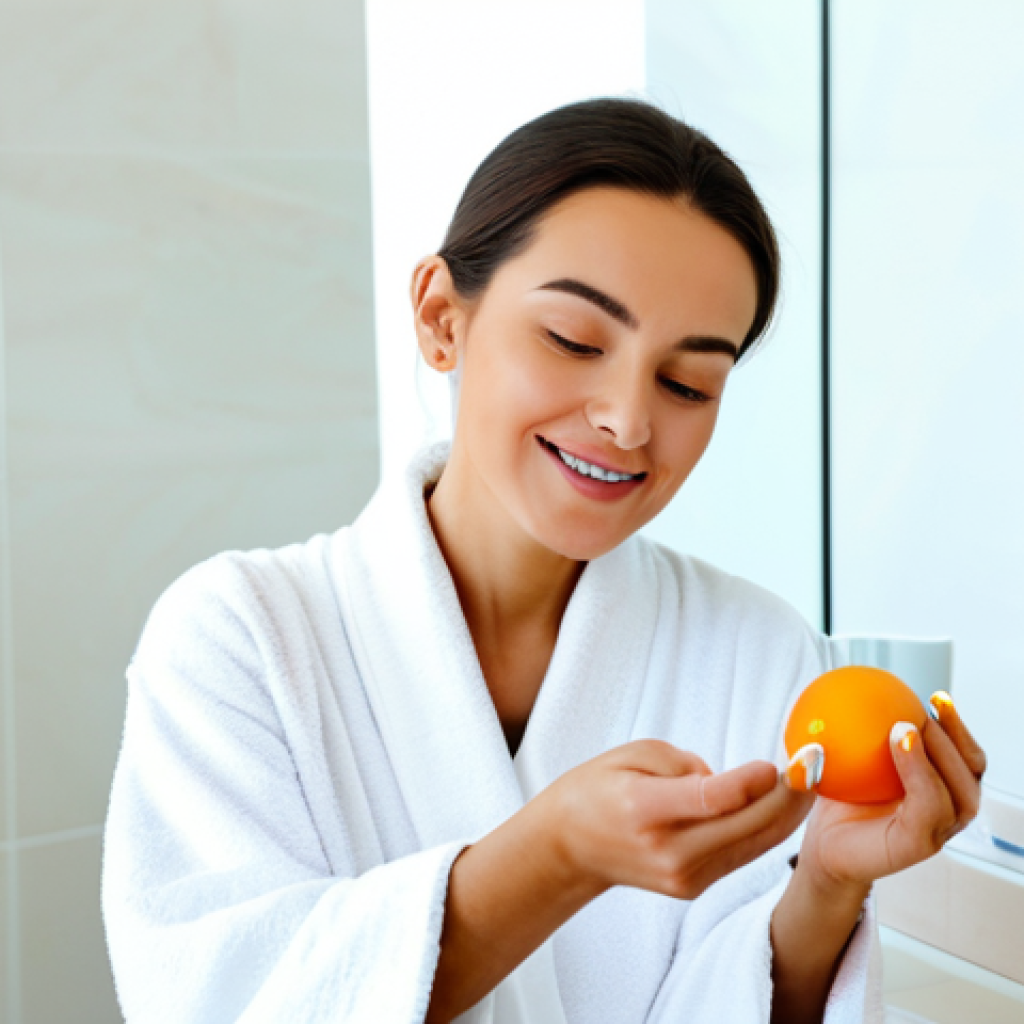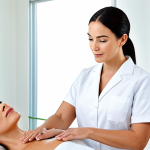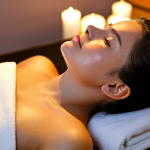Ever wondered why some people seem to effortlessly radiate a healthy glow, while others struggle with persistent skin issues? It all boils down to understanding the fundamentals of skincare.
Like building a house, a solid skincare routine needs a strong foundation – and that foundation is knowledge. Skincare isn’t just about slapping on creams and hoping for the best; it’s a science, a craft, and, frankly, a bit of an art.
With new advancements in skincare tech like personalized AI-powered regimens and microbiome-friendly products hitting the market, understanding the basics is more crucial than ever to navigate this complex world.
It allows us to make informed choices, separate fact from fiction, and tailor our routines to our unique needs, ensuring we’re not just following trends, but truly nurturing our skin for long-term health and radiance.
Let’s dive deeper and learn more in the following article.
Unlocking Radiant Skin: A Deep Dive into the Building Blocks
Understanding Your Skin Type: The First Step to Glowing Skin

Knowing your skin type is like having the secret ingredient to a perfect recipe. Are you oily, dry, combination, or sensitive? Each type has its own quirks and needs.
The Oily Skin Saga: Shine Control and Acne Battles
If you’re constantly battling shine and breakouts, you might be dealing with oily skin. This skin type produces excess sebum, leading to clogged pores and acne.
But don’t despair! The key is to use lightweight, oil-free products. Look for cleansers with salicylic acid or benzoyl peroxide to help unclog pores.
I’ve personally found that incorporating a clay mask once or twice a week can work wonders in absorbing excess oil and minimizing the appearance of pores.
Just remember, don’t over-wash your face! It can strip your skin of its natural oils and cause it to produce even more sebum in response.
The Dry Skin Dilemma: Hydration is Your Holy Grail
On the opposite end of the spectrum, dry skin lacks moisture, leading to flakiness, tightness, and even itchiness. Hydration is your best friend! Invest in a rich, creamy moisturizer and apply it generously after showering and before bed.
Ingredients like hyaluronic acid and ceramides can help attract and retain moisture. I once spent a winter in Colorado, and my skin became so dry it was painful.
What saved me was switching to an oil-based cleanser and layering a hydrating serum under my moisturizer. It made a world of difference!
The Combination Conundrum: Balancing Act
Combination skin is like having two different skin types on one face – oily in the T-zone (forehead, nose, and chin) and dry on the cheeks. This can make finding the right products a bit tricky.
The best approach is to treat each area separately. Use a gentle cleanser that won’t strip your skin of its natural oils and focus on hydrating the dry areas while controlling oil production in the T-zone.
Multimasking, where you use different masks on different parts of your face, can also be a game-changer.
Deciphering Ingredients: What to Look for (and What to Avoid)
Navigating the world of skincare ingredients can feel like learning a new language. But understanding what you’re putting on your skin is crucial for achieving your desired results.
The Power Players: Actives that Deliver Results
Certain ingredients have been scientifically proven to deliver real results. Retinoids, for example, are vitamin A derivatives that can help reduce wrinkles, improve skin texture, and treat acne.
However, they can also be irritating, so start with a low concentration and gradually increase it as your skin tolerates it. Vitamin C is another powerhouse ingredient that brightens the skin, protects against sun damage, and boosts collagen production.
I personally swear by a vitamin C serum every morning – it’s like a daily dose of sunshine for my skin!
The Red Flags: Ingredients to Approach with Caution
While some ingredients are beneficial, others can be harmful or irritating. Fragrances, for example, are a common cause of allergic reactions. Parabens, which were once widely used as preservatives, have been linked to hormone disruption.
And harsh sulfates can strip your skin of its natural oils, leading to dryness and irritation. It’s always a good idea to do your research and choose products with clean, non-toxic ingredients.
The Importance of Patch Testing
Before slathering a new product all over your face, always do a patch test! Apply a small amount of the product to a discreet area, like behind your ear or on your inner arm, and wait 24-48 hours to see if you experience any irritation.
This simple step can save you from a major skin disaster.
Building Your Skincare Routine: A Step-by-Step Guide
Now that you understand your skin type and the basics of ingredients, it’s time to build your own personalized skincare routine.
The Core Four: Cleansing, Toning, Moisturizing, and Sun Protection
Every good skincare routine should include these four essential steps: cleansing, toning, moisturizing, and sun protection. Cleansing removes dirt, oil, and makeup, while toning balances your skin’s pH.
Moisturizing hydrates and nourishes your skin, and sun protection prevents sun damage and premature aging. I never skip sunscreen, even on cloudy days.
It’s the single most important thing you can do for your skin!
Morning vs. Evening Routines: Tailoring Your Approach
Your skin has different needs during the day and at night. In the morning, focus on protecting your skin from environmental aggressors like sun and pollution.
Use a vitamin C serum and a broad-spectrum sunscreen. At night, focus on repairing and rejuvenating your skin. Use a retinoid or an exfoliating acid to promote cell turnover.
The Art of Exfoliation: Sloughing Away Dead Skin Cells
Exfoliation is key to achieving a smooth, radiant complexion. It removes dead skin cells that can clog pores and make your skin look dull. There are two types of exfoliants: physical and chemical.
Physical exfoliants, like scrubs, manually remove dead skin cells. Chemical exfoliants, like AHAs and BHAs, dissolve the bonds between dead skin cells.
I prefer chemical exfoliants because they’re gentler on the skin. Here’s a table summarizing some popular skincare ingredients and their benefits:
| Ingredient | Benefits | Skin Type |
|---|---|---|
| Hyaluronic Acid | Hydrates and plumps the skin | All skin types |
| Vitamin C | Brightens skin, protects against sun damage | All skin types |
| Retinol | Reduces wrinkles, improves skin texture | Mature skin |
| Salicylic Acid | Unclogs pores, treats acne | Oily and acne-prone skin |
| Ceramides | Strengthens the skin barrier, hydrates | Dry and sensitive skin |
Sun Protection: Your Skin’s Best Friend
I know, I know, you’ve heard it all before, but I can’t stress this enough: Sunscreen is the holy grail of skincare! It’s not just for preventing sunburns; it’s also crucial for preventing premature aging, dark spots, and skin cancer.
Understanding SPF: What the Numbers Mean
SPF stands for Sun Protection Factor, and it measures how well a sunscreen protects you from UVB rays, the type of radiation that causes sunburn. The higher the SPF, the more protection you get.
However, SPF doesn’t tell you anything about protection from UVA rays, which contribute to aging and skin cancer.
Broad-Spectrum Protection: Shielding Against UVA and UVB Rays
To ensure you’re getting comprehensive sun protection, look for a sunscreen that’s labeled “broad-spectrum.” This means it protects against both UVA and UVB rays.
I always make sure my sunscreen has broad-spectrum protection and an SPF of at least 30.
The Application Game: How to Apply Sunscreen Correctly
Applying sunscreen correctly is just as important as choosing the right one. You should apply it liberally, at least 15 minutes before sun exposure, and reapply every two hours, or more often if you’re swimming or sweating.
Don’t forget to apply sunscreen to often-neglected areas like your ears, neck, and the tops of your feet.
Lifestyle Factors: How Your Habits Affect Your Skin
Skincare isn’t just about what you put on your skin; it’s also about how you live your life. Your diet, sleep habits, stress levels, and even your environment can all impact your skin’s health and appearance.
The Beauty Sleep Connection: How Sleep Impacts Your Complexion
Getting enough sleep is essential for healthy skin. While you sleep, your body repairs and regenerates cells, including skin cells. Lack of sleep can lead to dullness, dark circles, and breakouts.
I aim for at least 7-8 hours of sleep per night.
The Diet-Skin Link: Nourishing Your Skin from the Inside Out
What you eat can also affect your skin. A diet rich in fruits, vegetables, and healthy fats can provide your skin with the nutrients it needs to stay healthy and radiant.
Avoid processed foods, sugary drinks, and excessive alcohol, as these can contribute to inflammation and breakouts.
Stress Management: Keeping Calm for Clear Skin
Stress can wreak havoc on your skin, leading to breakouts, eczema flare-ups, and even premature aging. Finding healthy ways to manage stress, such as exercise, meditation, or spending time in nature, can help keep your skin calm and clear.
Common Skincare Mistakes: Avoiding the Pitfalls
Even with the best intentions, it’s easy to make mistakes in your skincare routine. Here are some common pitfalls to avoid:
Over-Exfoliating: Stripping Your Skin of Its Natural Oils
Exfoliating too often or too aggressively can strip your skin of its natural oils, leading to dryness, irritation, and even breakouts. I recommend exfoliating only 1-2 times per week, and using a gentle exfoliant.
Using Too Many Products: Overloading Your Skin
Using too many products can overwhelm your skin and lead to irritation. It’s better to focus on a few key products that address your specific skin concerns.
I try to keep my routine simple and streamlined.
Picking and Popping: A Recipe for Scars and Infections
Picking and popping pimples can lead to scars and infections. Resist the urge to squeeze and let your skin heal naturally. If you have a persistent pimple, see a dermatologist for professional treatment.
Seeking Professional Help: When to See a Dermatologist
While a good skincare routine can address many skin concerns, some issues require professional help. If you have persistent acne, eczema, psoriasis, or any other skin condition that doesn’t improve with over-the-counter treatments, see a dermatologist.
They can provide a diagnosis and recommend a personalized treatment plan. I waited way too long to see a dermatologist for my acne, and I wish I had gone sooner!
They were able to prescribe a medication that finally cleared up my skin. By understanding these fundamental principles and incorporating them into your daily routine, you can unlock the secrets to radiant, healthy skin that glows from within.
Remember, consistency and patience are key. Don’t expect to see results overnight. But with dedication and the right approach, you can achieve the skin of your dreams.
Unlocking Radiant Skin: A Deep Dive into the Building Blocks
Understanding Your Skin Type: The First Step to Glowing Skin
Knowing your skin type is like having the secret ingredient to a perfect recipe. Are you oily, dry, combination, or sensitive? Each type has its own quirks and needs.
The Oily Skin Saga: Shine Control and Acne Battles
If you’re constantly battling shine and breakouts, you might be dealing with oily skin. This skin type produces excess sebum, leading to clogged pores and acne. But don’t despair! The key is to use lightweight, oil-free products. Look for cleansers with salicylic acid or benzoyl peroxide to help unclog pores. I’ve personally found that incorporating a clay mask once or twice a week can work wonders in absorbing excess oil and minimizing the appearance of pores. Just remember, don’t over-wash your face! It can strip your skin of its natural oils and cause it to produce even more sebum in response.
The Dry Skin Dilemma: Hydration is Your Holy Grail
On the opposite end of the spectrum, dry skin lacks moisture, leading to flakiness, tightness, and even itchiness. Hydration is your best friend! Invest in a rich, creamy moisturizer and apply it generously after showering and before bed. Ingredients like hyaluronic acid and ceramides can help attract and retain moisture. I once spent a winter in Colorado, and my skin became so dry it was painful. What saved me was switching to an oil-based cleanser and layering a hydrating serum under my moisturizer. It made a world of difference!
The Combination Conundrum: Balancing Act
Combination skin is like having two different skin types on one face – oily in the T-zone (forehead, nose, and chin) and dry on the cheeks. This can make finding the right products a bit tricky. The best approach is to treat each area separately. Use a gentle cleanser that won’t strip your skin of its natural oils and focus on hydrating the dry areas while controlling oil production in the T-zone. Multimasking, where you use different masks on different parts of your face, can also be a game-changer.
Deciphering Ingredients: What to Look for (and What to Avoid)
Navigating the world of skincare ingredients can feel like learning a new language. But understanding what you’re putting on your skin is crucial for achieving your desired results.
The Power Players: Actives that Deliver Results
Certain ingredients have been scientifically proven to deliver real results. Retinoids, for example, are vitamin A derivatives that can help reduce wrinkles, improve skin texture, and treat acne. However, they can also be irritating, so start with a low concentration and gradually increase it as your skin tolerates it. Vitamin C is another powerhouse ingredient that brightens the skin, protects against sun damage, and boosts collagen production. I personally swear by a vitamin C serum every morning – it’s like a daily dose of sunshine for my skin!
The Red Flags: Ingredients to Approach with Caution
While some ingredients are beneficial, others can be harmful or irritating. Fragrances, for example, are a common cause of allergic reactions. Parabens, which were once widely used as preservatives, have been linked to hormone disruption. And harsh sulfates can strip your skin of its natural oils, leading to dryness and irritation. It’s always a good idea to do your research and choose products with clean, non-toxic ingredients.
The Importance of Patch Testing
Before slathering a new product all over your face, always do a patch test! Apply a small amount of the product to a discreet area, like behind your ear or on your inner arm, and wait 24-48 hours to see if you experience any irritation. This simple step can save you from a major skin disaster.
Building Your Skincare Routine: A Step-by-Step Guide
Now that you understand your skin type and the basics of ingredients, it’s time to build your own personalized skincare routine.
The Core Four: Cleansing, Toning, Moisturizing, and Sun Protection
Every good skincare routine should include these four essential steps: cleansing, toning, moisturizing, and sun protection. Cleansing removes dirt, oil, and makeup, while toning balances your skin’s pH. Moisturizing hydrates and nourishes your skin, and sun protection prevents sun damage and premature aging. I never skip sunscreen, even on cloudy days. It’s the single most important thing you can do for your skin!
Morning vs. Evening Routines: Tailoring Your Approach
Your skin has different needs during the day and at night. In the morning, focus on protecting your skin from environmental aggressors like sun and pollution. Use a vitamin C serum and a broad-spectrum sunscreen. At night, focus on repairing and rejuvenating your skin. Use a retinoid or an exfoliating acid to promote cell turnover.
The Art of Exfoliation: Sloughing Away Dead Skin Cells
Exfoliation is key to achieving a smooth, radiant complexion. It removes dead skin cells that can clog pores and make your skin look dull. There are two types of exfoliants: physical and chemical. Physical exfoliants, like scrubs, manually remove dead skin cells. Chemical exfoliants, like AHAs and BHAs, dissolve the bonds between dead skin cells. I prefer chemical exfoliants because they’re gentler on the skin.
Here’s a table summarizing some popular skincare ingredients and their benefits:
| Ingredient | Benefits | Skin Type |
|---|---|---|
| Hyaluronic Acid | Hydrates and plumps the skin | All skin types |
| Vitamin C | Brightens skin, protects against sun damage | All skin types |
| Retinol | Reduces wrinkles, improves skin texture | Mature skin |
| Salicylic Acid | Unclogs pores, treats acne | Oily and acne-prone skin |
| Ceramides | Strengthens the skin barrier, hydrates | Dry and sensitive skin |
Sun Protection: Your Skin’s Best Friend
I know, I know, you’ve heard it all before, but I can’t stress this enough: Sunscreen is the holy grail of skincare! It’s not just for preventing sunburns; it’s also crucial for preventing premature aging, dark spots, and skin cancer.
Understanding SPF: What the Numbers Mean
SPF stands for Sun Protection Factor, and it measures how well a sunscreen protects you from UVB rays, the type of radiation that causes sunburn. The higher the SPF, the more protection you get. However, SPF doesn’t tell you anything about protection from UVA rays, which contribute to aging and skin cancer.
Broad-Spectrum Protection: Shielding Against UVA and UVB Rays
To ensure you’re getting comprehensive sun protection, look for a sunscreen that’s labeled “broad-spectrum.” This means it protects against both UVA and UVB rays. I always make sure my sunscreen has broad-spectrum protection and an SPF of at least 30.
The Application Game: How to Apply Sunscreen Correctly
Applying sunscreen correctly is just as important as choosing the right one. You should apply it liberally, at least 15 minutes before sun exposure, and reapply every two hours, or more often if you’re swimming or sweating. Don’t forget to apply sunscreen to often-neglected areas like your ears, neck, and the tops of your feet.
Lifestyle Factors: How Your Habits Affect Your Skin
Skincare isn’t just about what you put on your skin; it’s also about how you live your life. Your diet, sleep habits, stress levels, and even your environment can all impact your skin’s health and appearance.
The Beauty Sleep Connection: How Sleep Impacts Your Complexion
Getting enough sleep is essential for healthy skin. While you sleep, your body repairs and regenerates cells, including skin cells. Lack of sleep can lead to dullness, dark circles, and breakouts. I aim for at least 7-8 hours of sleep per night.
The Diet-Skin Link: Nourishing Your Skin from the Inside Out
What you eat can also affect your skin. A diet rich in fruits, vegetables, and healthy fats can provide your skin with the nutrients it needs to stay healthy and radiant. Avoid processed foods, sugary drinks, and excessive alcohol, as these can contribute to inflammation and breakouts.
Stress Management: Keeping Calm for Clear Skin
Stress can wreak havoc on your skin, leading to breakouts, eczema flare-ups, and even premature aging. Finding healthy ways to manage stress, such as exercise, meditation, or spending time in nature, can help keep your skin calm and clear.
Common Skincare Mistakes: Avoiding the Pitfalls
Even with the best intentions, it’s easy to make mistakes in your skincare routine. Here are some common pitfalls to avoid:
Over-Exfoliating: Stripping Your Skin of Its Natural Oils
Exfoliating too often or too aggressively can strip your skin of its natural oils, leading to dryness, irritation, and even breakouts. I recommend exfoliating only 1-2 times per week, and using a gentle exfoliant.
Using Too Many Products: Overloading Your Skin
Using too many products can overwhelm your skin and lead to irritation. It’s better to focus on a few key products that address your specific skin concerns. I try to keep my routine simple and streamlined.
Picking and Popping: A Recipe for Scars and Infections
Picking and popping pimples can lead to scars and infections. Resist the urge to squeeze and let your skin heal naturally. If you have a persistent pimple, see a dermatologist for professional treatment.
Seeking Professional Help: When to See a Dermatologist
While a good skincare routine can address many skin concerns, some issues require professional help. If you have persistent acne, eczema, psoriasis, or any other skin condition that doesn’t improve with over-the-counter treatments, see a dermatologist. They can provide a diagnosis and recommend a personalized treatment plan. I waited way too long to see a dermatologist for my acne, and I wish I had gone sooner! They were able to prescribe a medication that finally cleared up my skin.
By understanding these fundamental principles and incorporating them into your daily routine, you can unlock the secrets to radiant, healthy skin that glows from within. Remember, consistency and patience are key. Don’t expect to see results overnight. But with dedication and the right approach, you can achieve the skin of your dreams.
In Conclusion
Embarking on your skincare journey can feel overwhelming, but remember, it’s a marathon, not a sprint. Experiment, listen to your skin, and don’t be afraid to seek advice. With the right knowledge and a little dedication, you can achieve that healthy, radiant glow you’ve always wanted. Here’s to happy, healthy skin!
Useful Tips to Know
1. Always read product reviews before purchasing to understand real user experiences.
2. Consider seasonal skincare adjustments, switching to heavier moisturizers in winter.
3. Don’t forget to apply skincare products to your neck and décolletage.
4. Look for travel-sized versions of your favorite products for convenience.
5. Clean your makeup brushes regularly to prevent bacteria build-up and breakouts.
Key Takeaways
• Knowing your skin type is crucial for effective skincare.
• Understand ingredients: Focus on beneficial actives and avoid harmful additives.
• Consistency is key: Build a daily routine and stick to it.
• Protect your skin from the sun with broad-spectrum sunscreen.
• Lifestyle factors such as sleep, diet, and stress impact skin health.
Frequently Asked Questions (FAQ) 📖
Q: Is skincare really that important, or is it just a trend?
A: Honestly, I used to think skincare was mostly for people who wanted to look younger or had specific skin problems. But after dealing with adult acne and trying countless products, I realized it’s about more than just appearances.
It’s about protecting your skin, which is your body’s largest organ! Think of it like brushing your teeth – you do it every day to prevent problems down the road.
Skincare is the same; it’s a preventative measure and a way to keep your skin healthy and happy in the long run. Plus, taking even five minutes for a simple routine can be a surprisingly relaxing ritual in a hectic day.
Q: With so many products out there, how do I even begin to create a routine? It’s so overwhelming!
A: I totally get the overwhelm! My first foray into skincare felt like walking into a cosmetics store blindfolded. My advice?
Start small! Don’t feel like you need ten different products right away. Focus on the basics: a gentle cleanser, a moisturizer, and most importantly, a sunscreen with at least SPF 30 every single day, rain or shine!
Once you’ve got those down, you can slowly add in other targeted treatments like serums or exfoliants, depending on your skin’s needs. And remember, what works for your best friend might not work for you, so be patient and experiment until you find what your skin loves.
Reading reviews from real people online helped me a lot when I started building my routine.
Q: I’ve heard a lot about
A: I-powered skincare. Is it really worth the hype? A3: That’s a good question!
I’ve been curious about those AI-powered regimens myself. On one hand, the idea of a personalized skincare routine tailored to your unique skin through some fancy algorithm sounds amazing, right?
They analyze your skin data and suggest products formulated just for you. My friend tried one of these services, and she mentioned that the initial analysis was pretty detailed, asking about everything from her diet to her stress levels.
However, she also said that some of the recommended products were quite pricey, and ultimately, she felt like she could have achieved similar results by doing a little research and consulting with a dermatologist.
So, while the technology is definitely interesting, I think it’s important to remember that it’s not a magic bullet. It’s always a good idea to do your own research and maybe get a professional opinion before investing in such a system.
📚 References
Wikipedia Encyclopedia
구글 검색 결과
구글 검색 결과
구글 검색 결과
구글 검색 결과
구글 검색 결과






